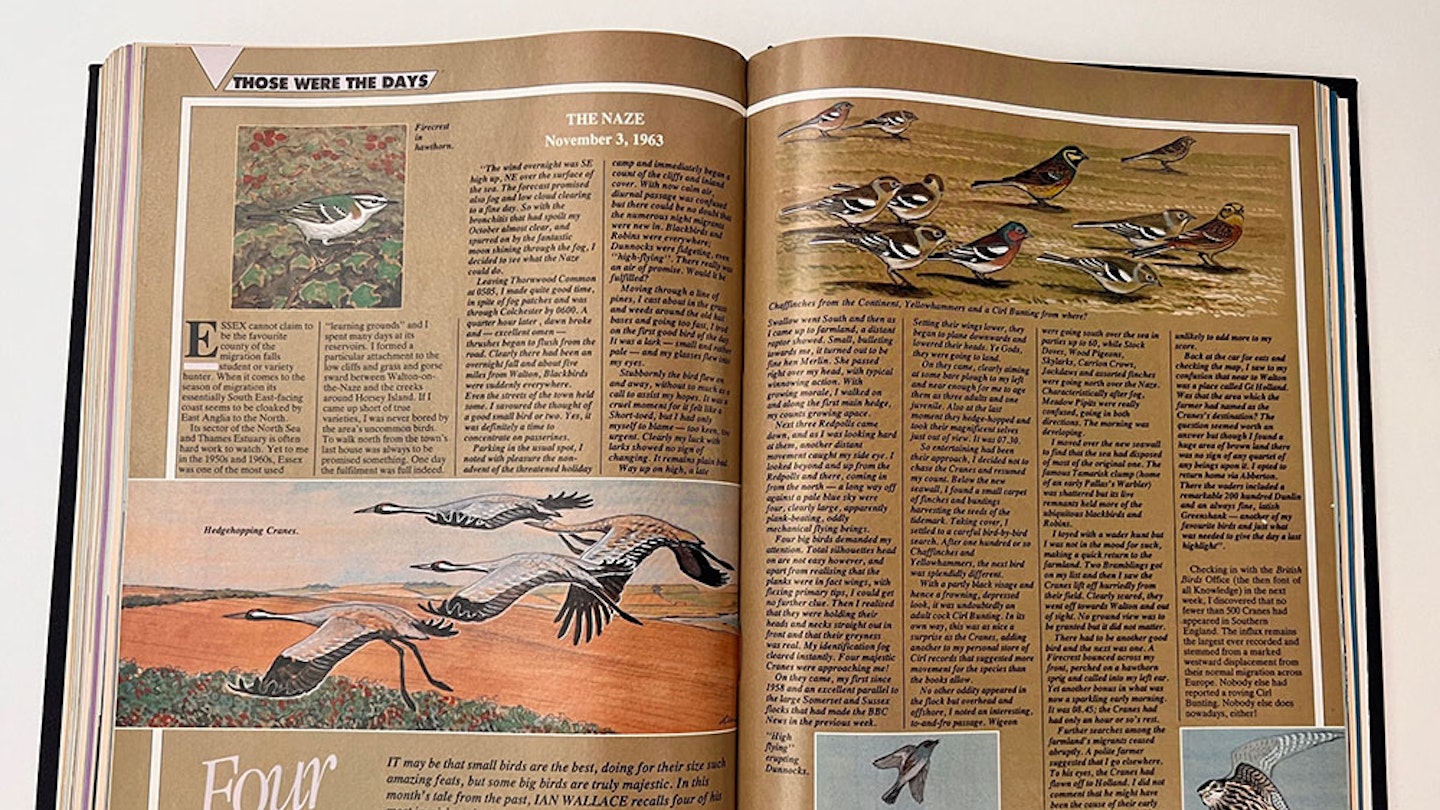Four flying machines
November 1989
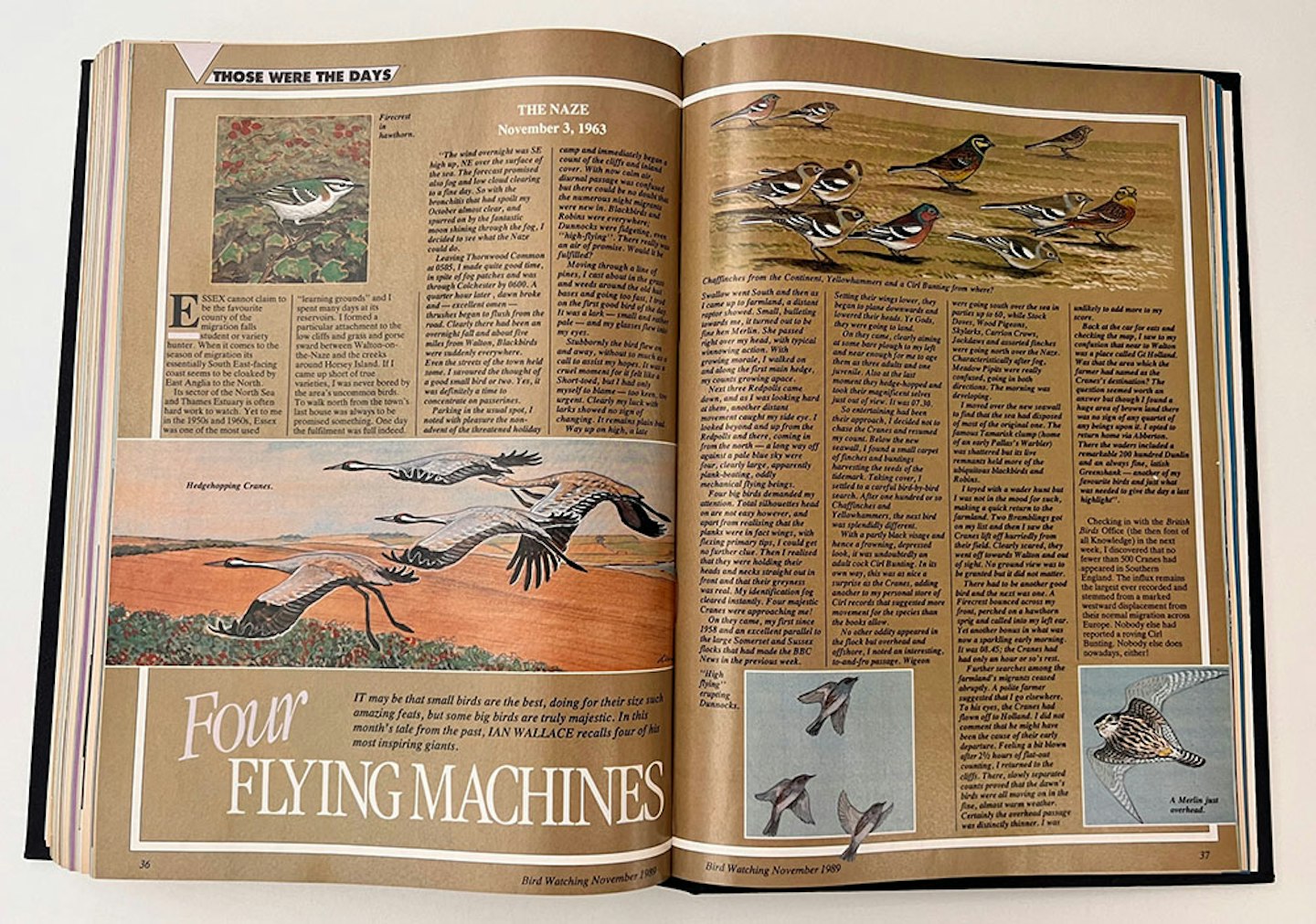
It may be that small birds are the best, doing for their size such amazing feats, but some big birds are truly majestic. In this month’s tale from the past, Ian Wallace recalls four of his most inspiring giants.
Essex cannot claim to be the favourite county of the migration falls’ student or variety hunter. When it comes to the season of migration its essentially south-east-facing coast seems to be cloaked by East Anglia to the North.
Its sector of the North Sea and Thames Estuary is often hard work to watch. Yet to me in the 1950s and 1960s, Essex was one of the most used “learning grounds” and I spent many days at its reservoirs. I formed a particular attachment to the low cliffs and grass and gorse sward between Walton-on-the-Naze and the creeks around Horsey Island. If I came up short of true varieties, I was never bored by the area’s uncommon birds. To walk north from the town’s last house was always to be promised something. One day, the fulfilment was full indeed.
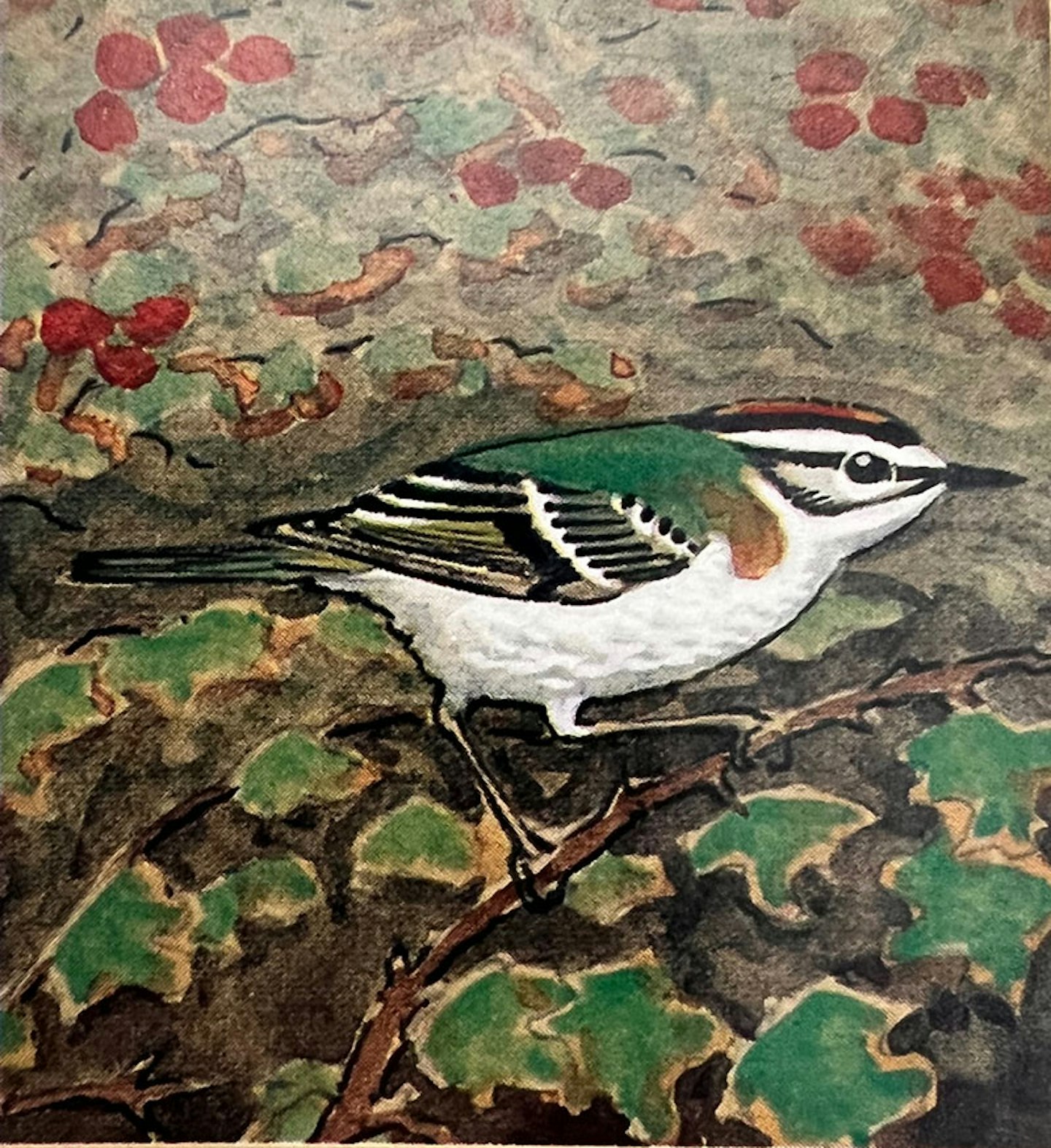
The Naze, 3 November 1963
The wind overnight was SE high up, NE over the surface of the sea. The forecast promised also fog and low cloud clearing to a fine day. So with the bronchitis that had spoilt my October almost clear, and spurred on by the fantastic moon shining through the fog, I decided to see what the Naze could do.
Leaving Thornwood Common at 0505, I made quite good time, in spite of fog patches, and was through Colchester by 0600. A quarter hour later, dawn broke and – excellent omen – thrushes began to flush from the road. Clearly, there had been an overnight fall and about five miles from Walton, Blackbirds were suddenly everywhere. Even the streets of the town held some.
I savoured the thought of a good small bird or two. Yes, it was definitely a time to concentrate on passerines. Parking in the usual spot, I noted with pleasure the non-advent of the threatened holiday camp and immediately began a count of the cliffs and inland cover. With now calm air, diurnal passage was confused but there could be no doubt that the numerous night migrants were new in. Blackbirds and Robins were everywhere; Dunnocks were fidgeting, even “high-flying’. There really was an air of promise. Would it be fulfilled?
Moving through a line of pines, I cast about in the grass and weeds around the old hut bases and going too fast, I trod on the first good bird of the day. It was a lark – small and rather pale – and my glasses flew into my eyes. Stubbornly, the bird flew on and away, without so much as a call to assist my hopes. It was a cruel moment, for it felt like a Short-toed, but I had only myself to blame – too keen, too urgent.
Clearly, my luck with larks showed no sign of changing. It remains plain bad. Way up on high, a late Swallow went south and then as I came up to farmland, a distant raptor showed. Small, bulleting towards me, it turned out to be fine hen Merlin. She passed right over my head, with typical winnowing action.
With growing morale, I walked on and along the first main hedge, my counts growing apace. Next, three redpolls came down, and as I was looking hard at them, another distant movement caught my side eye. I looked beyond and up from the redpolls and there, coming in from the north – a long way off against a pale blue sky were four, clearly large, apparently ‘plank-beating’, oddly mechanical flying beings.
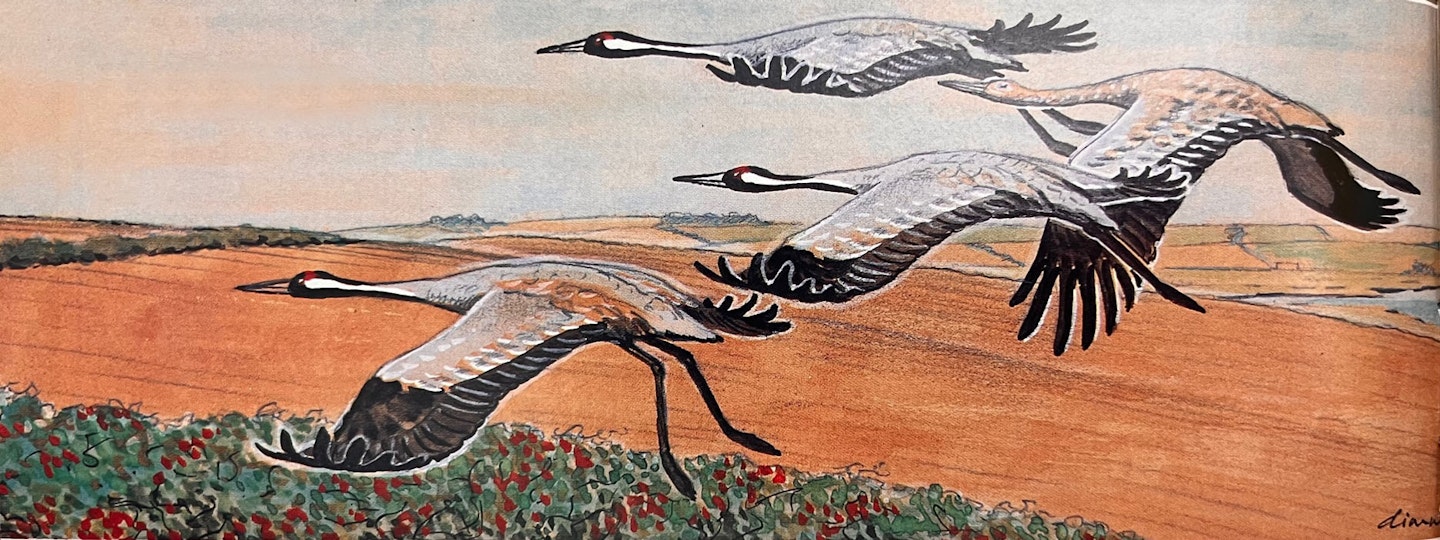
Four big birds demanded my attention. Total silhouettes head on are not easy however, and apart from realising that the planks were in fact wings, with flexing primary tips, I could get no further clue. Then I realised that they were holding their heads and necks straight out in front and that their greyness was real. My identification fog cleared instantly. Four majestic Cranes were approaching me!
On they came, my first since 1958 and an excellent parallel to the large Somerset and Sussex flocks that had made the BBC News in the previous week. Setting their wings lower, they began to plane downwards and lowered their heads.
Ye Gods, they were going to land!
On they came, clearly aiming at some bare plough to my left and near enough for me to age them as three adults and one juvenile. Also, at the last moment they hedge-hopped and took their magnificent selves just out of view. It was 07.30.
So entertaining had been their approach, I decided not to chase the Cranes and resumed my count. Below the new seawall, I found a small carpet of finches and buntings harvesting the seeds of the tidemark. Taking cover, I settled to a careful bird-by-bird search.
After 100 or so Chaffinches and Yellowhammers, the next bird was splendidly different. With a partly black visage and hence a frowning, depressed look, it was undoubtedly an adult cock Cirl Bunting. In its own way, this was as nice a surprise as the Cranes, adding another to my personal store of Cirl records that suggested more movement for the species than the books allow.

No other oddity appeared in the flock but overhead and offshore, I noted an interesting, to-and-fro passage. Wigeon were going south over the sea in in parties up to 60, while Stock Doves, Woodpigeons, Sky Larks, Carrion Crows, Jackdaws and assorted finches were going north over the Naze. Characteristically after fog, Meadow Pipits were really confused, going in both directions.
The morning was developing. I moved over the new seawall to find that the sea had disposed of most of the original one. The famous Tamarisk clump (home of an early Pallas’s Warbler) was shattered, but its live remnants held more of the ubiquitous Blackbirds and Robins.
I toyed with a wader hunt but I was not in the mood for such, making a quick return to the farmland. Two Bramblings got on my list and then I saw the Cranes lift off hurriedly from their field. Clearly scared, they went off towards Walton and out of sight. No ground view was to be granted but it did not matter.
There had to be another good bird and the next was one. A Firecrest bounced across my front, perched on a Hawthorn sprig and called into my left ear. Yet another bonus in what was now a sparkling early morning. It was 08.45; the Cranes had had only an hour or so’s rest.
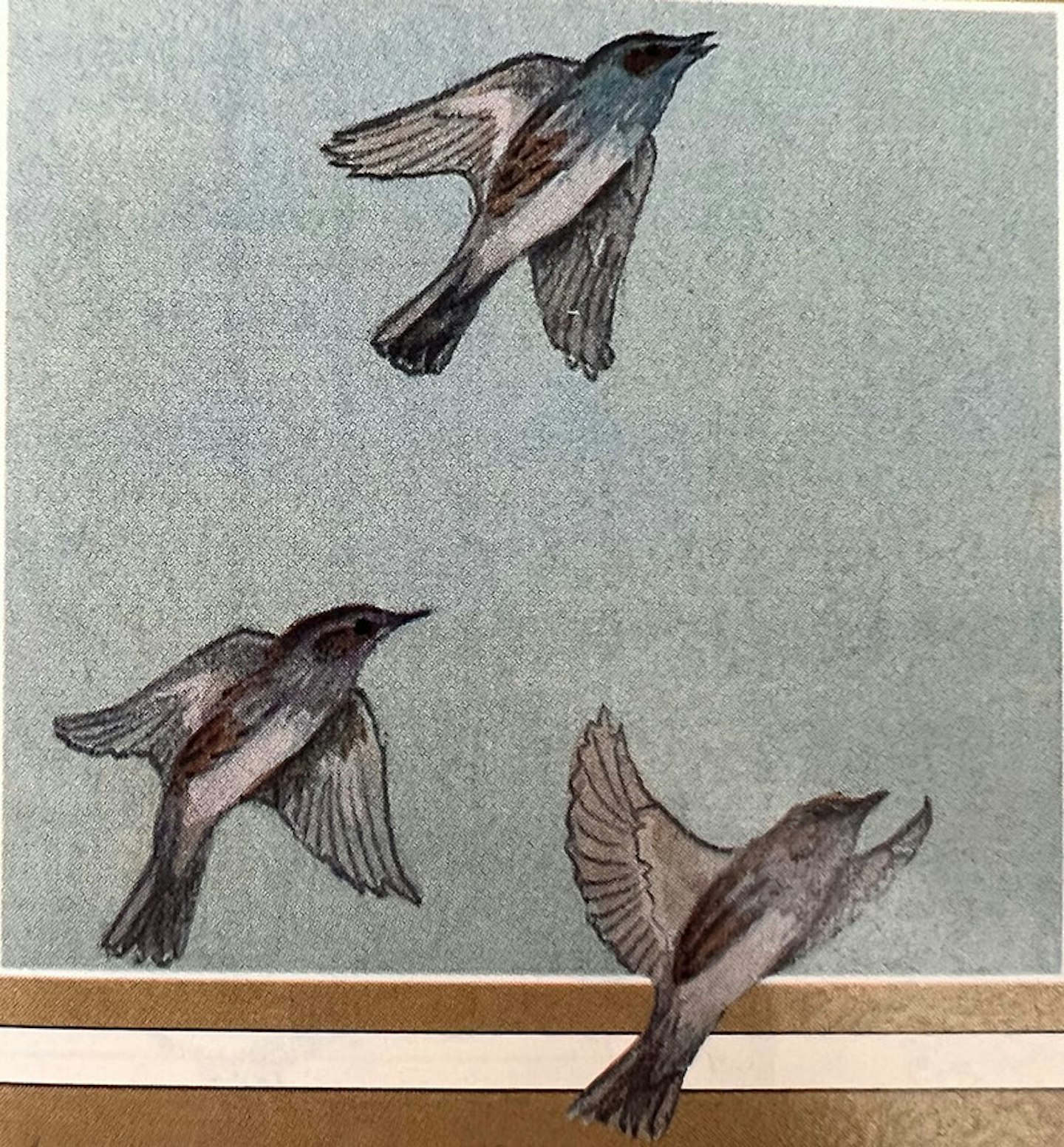
Further searches among the farmland’s migrants ceased abruptly. A polite farmer suggested that I go elsewhere. To his eyes, the Cranes had flown off to Holland. I did not comment that he might have been the cause of their early departure. Feeling a bit blown after 2½ hours of flat-out counting, I returned to the cliffs. There, slowly separated counts proved that the dawn’s birds were all moving on in the fine, almost warm weather.
Certainly the overhead passage was distinctly thinner. I was unlikely to add more to my score. Back at the car for eats and checking the map, I saw to my confusion that near to Walton was a place called Great Holland. Was that the area which the farmer had named as the Cranes’s destination? The question seemed worth an answer, but though I found a huge area of brown land, there was no sign of any quartet of any beings upon it.
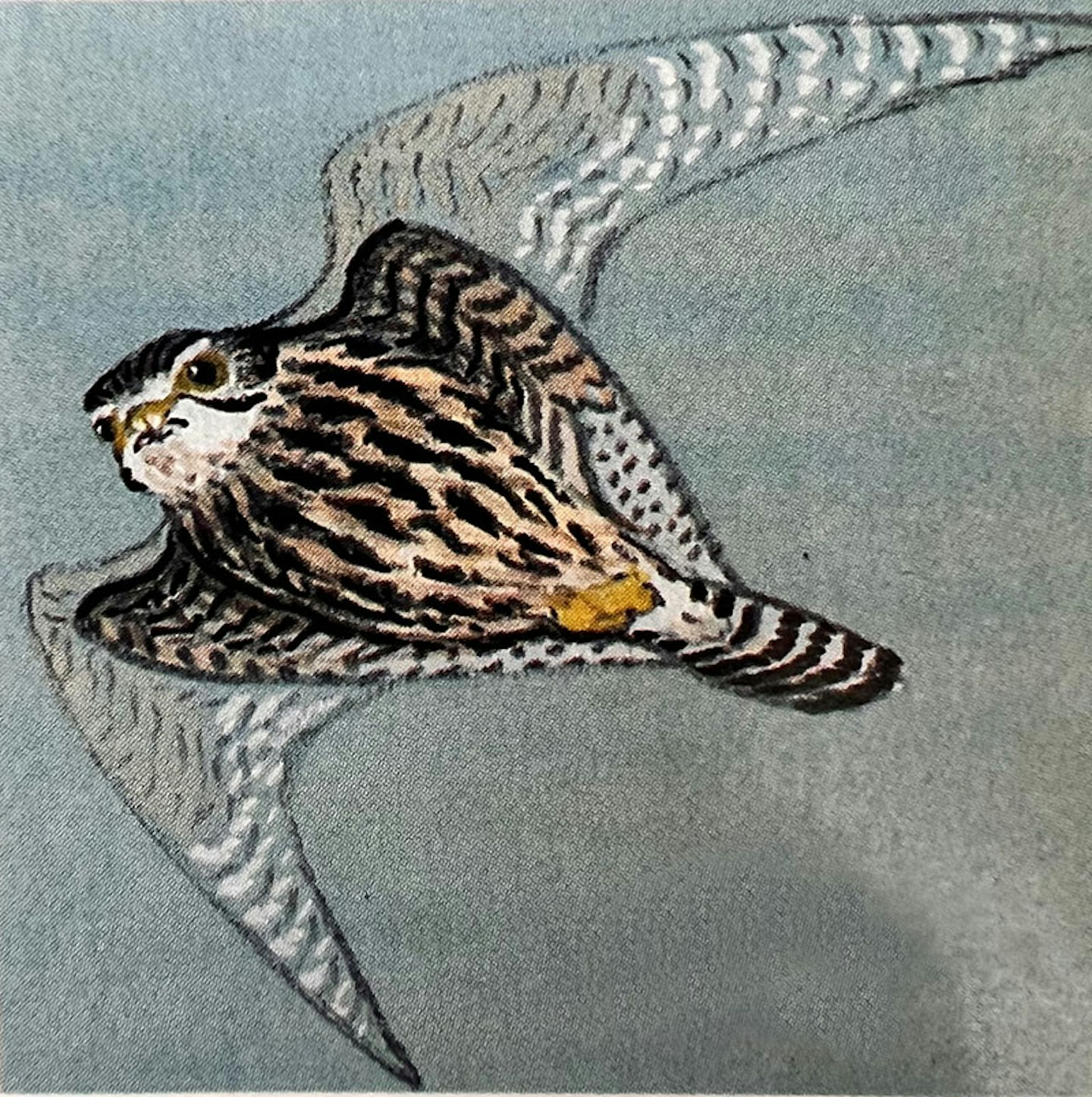
I opted to return home via Abberton. There the waders included a remarkable 200 Dunlin and an always fine, latish Greenshank – another of my favourite birds and just what was needed to give the day a last highlight. Checking in with the British Birds Office (the then font of all Knowledge) in the next week. I discovered that no fewer than 500 Cranes had appeared in Southern England. The influx remains the largest ever recorded and stemmed from a marked westward displacement from their normal migration across Europe. Nobody else had reported a roving Cirl Bunting.
Nobody else does nowadays, either!
